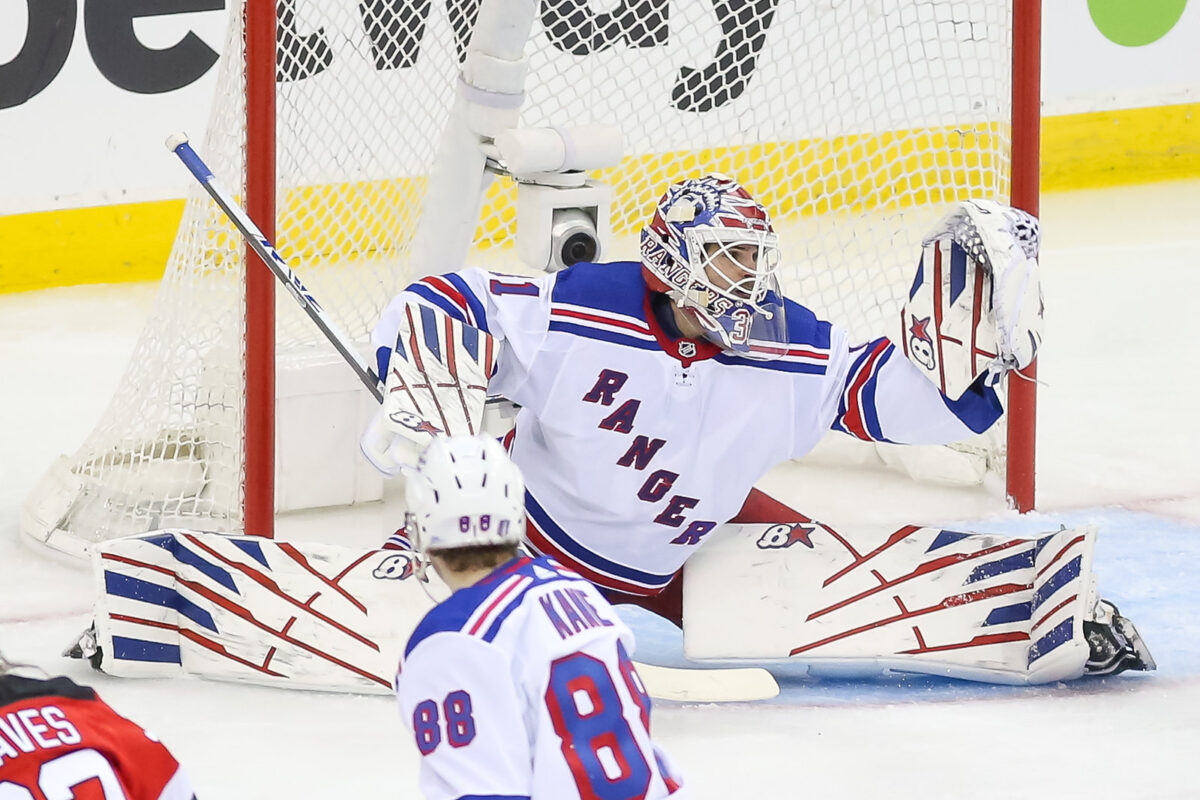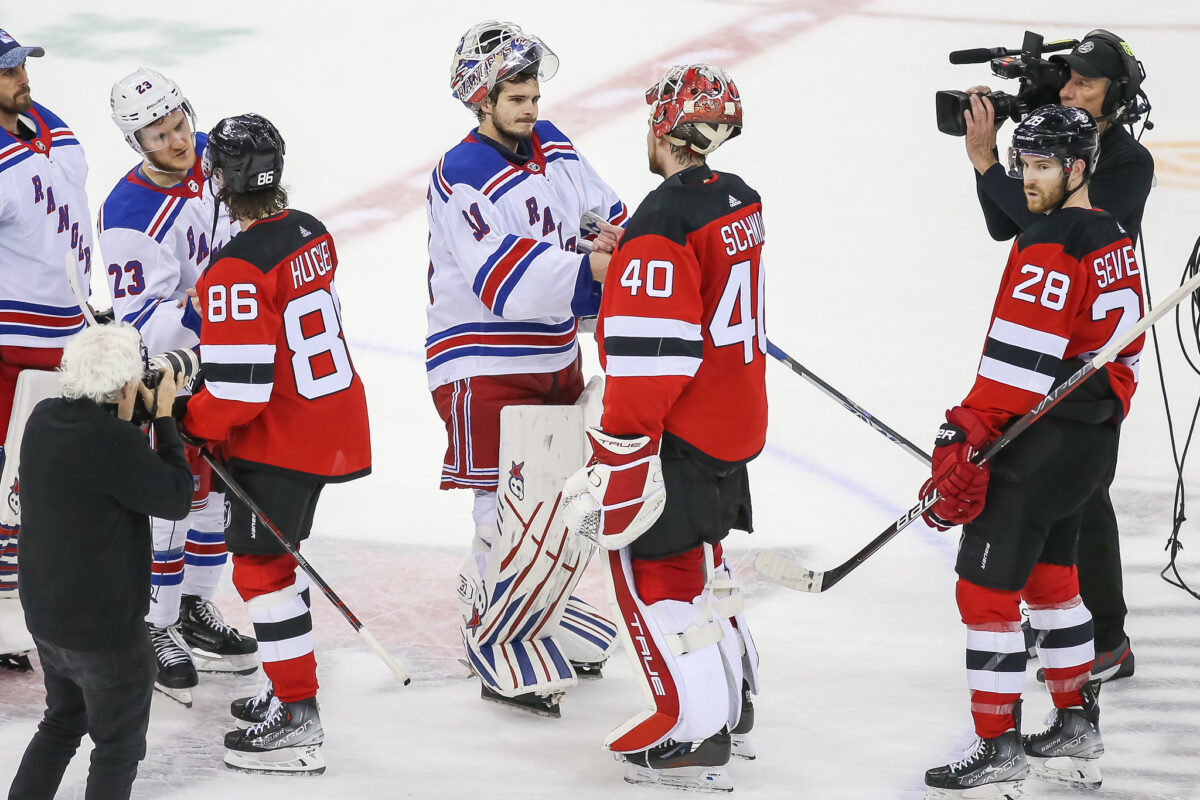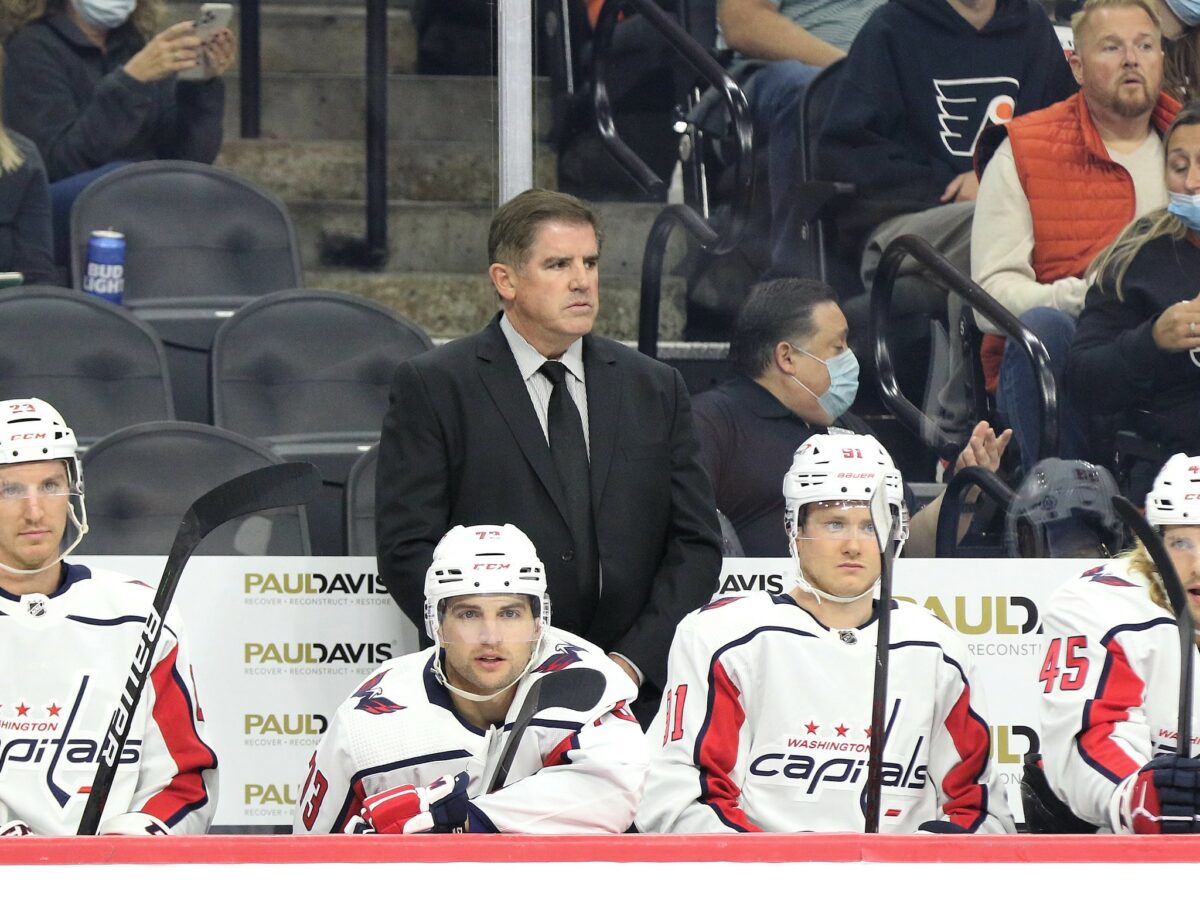Shortly after last season ended, New York Rangers goaltender Igor Shesterkin issued a firm proclamation about 2023-24:
“Next season is going to be a different Igor.” (From ‘Igor Shesterkin Vows a Dominant Comeback Season’, New York Post, 5/3/23)
For the Rangers’ sake, they had better hope not.
No NHL team has been more fortunate between the pipes over the last four decades than the Blueshirts, who got a Vezina Trophy-winning performance from John Vanbiesbrouck in 1985-86 and have been the beneficiary of mostly elite goaltending ever since – and no team has needed that elongated brilliance more than the Rangers.

The nearly uninterrupted chain of “Beezer” to Mike Richter to Henrik Lundqvist to Shesterkin – all Rangers draft picks – represents a clinic in young goaltending talent acquisition and development, spread over multiple generations. While the organization hasn’t come close to matching that track record at other positions during that time, the sheer brilliance in turning out elite players in net has brought a level of overall success that, while modest compared to many other NHL franchises, has allowed the club to overcome often-significant shortcomings and compete for Stanley Cups.
Shesterkin Rediscovered All-World Form in 2023 Playoffs
Shesterkin, like his predecessors, isn’t just really good – he’s deeply driven to make the most of his abilities. That’s why, following a season in which he went 37-13-8 with a .916 save percentage, 2.48 goals-against average and three shutouts, the 2022 Vezina Trophy winner made it clear in the aforementioned nine words that he was less than pleased with his most recent performance.
Despite Shesterkin’s emergence as one of the league’s best at his position, he may never be able to match what he did to capture the Vezina two seasons ago: A 36-13-4 record, NHL-leading marks of a 2.07 GAA, .935 save percentage, 44.9 goals saved above average and 70 goals-against percentage, along with six shutouts. He carried those Rangers to a 110-point season and within two wins of the Stanley Cup Final.

Shesterkin, though, was his team’s best player in the crushing seven-game first-round playoff loss to the New Jersey Devils this spring, posting a 1.96 GAA and .931 save percentage. That perhaps restored any lost belief in himself going into 2023-24.
“Honestly, I’m not happy about this season, for sure,” he said. “I felt a lot of pressure after (2021-22). I thought it was going to be more easy to play, but a lot of pressure. (Rangers director of goaltending Benoit Allaire) helped me so much. It was a tough season, but I learned a lot. I got some experience with this one.”
Vanbiesbrouck played for teams that were slightly above-average at best and Richter won the Rangers’ lone championship of the past 83 years. When it comes to Shesterkin, the feeling amongst fans, and assumedly the organization, is akin to the feeling about Lundqvist during his playing days: Don’t waste him.
Lundqvist, the classy superstar, never made it to the top of the championship mountain, falling three wins shy in the excruciating 2014 Stanley Cup Final loss to the Los Angeles Kings. After seeing The King fail to lift the chalice, the Rangers would certainly like to avoid a repeat with Shesterkin, who at 27 should be approaching his prime.
It’s a typical narrative in sports: A team with a great player benefits from the opportunity and also grapples with the pressure to win a title before it’s too late. Can Shesterkin’s star-laden club get on a run behind him (or, in front) and make another charge at the Cup while it again has one of the best in the world at a critical position? The Rangers relied disproportionately on Lundqvist during three trips to the Eastern Conference Final, including the 2014 Cup Final appearance.
Rangers Hoping to Win Championship Before Shesterkin Gets Paid
That history seems to be repeating itself so far. Last season, Shesterkin faced the ninth-most shots against with 1,719, and was fifth in high-danger shots against with 418 (courtesy naturalstattrick.com). Unless new coach Peter Laviolette can transform the Blueshirts into a lockdown defensive outfit – and that’s probably all but impossible – they’ll most likely continue to count on the Moscow native to be all-world on a near-nightly basis.
Though Shesterkin should have plenty of years left as a top goalie, the Rangers are almost out of years in which he’ll be one of the league’s biggest bargains. Shesterkin’s historic bridge contract, which carries a $5.67 million salary-cap hit, expires after the 2024-25 season. If he continues to play at his current level, he might come close to doubling his salary.
Related: Rangers’ Goalie Showdown – Lundqvist vs. Richter
The Rangers will have little leverage as they look to keep their most important player, and will face a conundrum: They can’t afford to lose Shesterkin to free agency, but roster improvements become exponentially more difficult when you add lucrative long-term contracts, especially ones with cap hits of $10 million or more. Building a championship roster is much easier when you’re paying the most critical part of the team less than $6 million per season.

The Rangers, coming off back-to-back 100-plus point seasons, are built to win right now. They’re hoping the in-their-prime stars will be supplemented by more development and production from the handful of high-end youngsters on the roster as they look to navigate through the loaded Eastern Conference and reach the championship series.
Still, how far the Blueshirts go in 2023-24 will be most heavily influenced by how otherworldly the 118th overall pick in the 2014 NHL Draft can continue to be. Shesterkin has done a pretty good job of reaching those heights over the past two seasons. So, contrary to his stated determination to be different, the Rangers need Shesterkin to stay just the way he is now.
